Gardener’s Guide: how to Practice Permaculture
As climate change continues to affect our planet, it is now in the hands of political leaders, scientists, engineers, and—yes—even the everyday gardeners to enact change. Erratic weather patterns are threatening crops worldwide; greenhouse gases in the atmosphere are ballooning due to inefficient agricultural practices; and growing acidification in our oceans is affecting aquatic ecosystems and, in turn, our food supply.
While political leaders are pushing to pass environmental protection laws and scientists and engineers are developing new methods to grow and store crops more efficiently, there is still so much more to be done—and, really, it begins with everyone.
Everyone can do more to protect the environment. We can recycle plastic, paper, and metal so it doesn’t end up in our oceans, rivers, and landfills; we can create less food waste by decreasing portion sizes; we can bike to work rather than drive. But there is another way—a fun way—that we can help the planet.
Permaculture, a combination of sustainable agriculture, landscape design, and ecology, uses design principles to promote natural spaces in which plants mutually benefit one another. By adhering to the principles of permaculture, you can design and create an inviting, environmentally friendly garden that will leave your neighbors in awe and your plants in delight.
Know your Space
Knowing your space is an important principle of permaculture. When planting a garden, it is important to be mindful of your environment—and we’re not talking about remembering to throw away your bubble gum wrapper. Knowing the space you have to work with and knowing its dynamics will prevent you from killing your plants. Ask yourself these questions before planting your garden:
- Which plants grow natively in this area? Which plants can you pair with these native plants?
- What is the weather like during each season? Do you get a lot of rain? A lot of sun?
- What sort of interference might your garden experience? Are there rabbits or deer that could eat your vegetables?
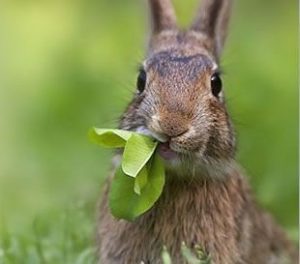
Design your garden on paper first. This will allow you to envision what your garden will look like while contemplating potential issues. If one side of your yard receives more light than the other side, take note; this could make the difference between healthy and unhealthy plants.
For those who live in the city, finding a place to garden can be difficult (and sometimes, houseplants just aren’t enough). Planting a green roof is one way you can make use of little space. Not only will it provide you the opportunity to garden, but it will also benefit you financially. Green roofs last longer than conventional roofs, absorb storm water, and reduce energy costs. And if heights aren’t your thing, try installing plant climbers and wall shrubs, which don’t require any yard space.
Create a Rain Garden
Permaculture makes use of available resources in smart and conservative ways. And a rain garden is a great way to make use of water resources.
When it rains, surface water that is not absorbed into the ground flows over the land in the form of runoff, soaking up pollutants, such as fertilizer, sediment, bacteria, and petroleum byproducts, that can negatively affect plant and wildlife.
A rain garden can reduce the amount of runoff by storing rainwater in the ground. Here’s how it works. Rainwater is directed from a source, such as a gutter, to a depression in the ground via a channel. Native plants then absorb the water that is directed toward them while excess water flows into the depression. The ponding zone at the bottom of this depression allows pollutants in the runoff to settle, thus reducing the effects of pollution on plant life.
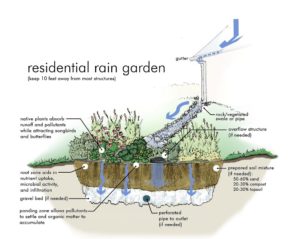
Rain gardens are beneficial because they restore the water table and harvest water resources for when they are scarce. A rain garden will allow you to keep your plants hydrated during a dry spell. For a more efficient rain garden, incorporate water-absorbing plants, such as herbaceous perennials, and bark chips to absorb moisture and ward off weeds.
Incorporate a Pollinator Garden
When practicing permaculture, it’s important to design with the ecosystem in mind.
Pollinators, such as bees, bats, hummingbirds, and butterflies, are essential to our crops and plants. Nearly 75% of our crops depend on pollinators in order to bear the fruits and vegetables we eat, such as apples and squash—and those lovely flowers flanking the edges of our homes depend on these busy workers in order to reproduce.
In recent years, pollinators have begun to decline, especially in North America. Bee colonies, for instance, have rapidly decreased over the last 15 years in what is known as Colony Collapse Disorder (CCD)—and this is really bad news for humans, because honey bees alone contribute to nearly $20 billion worth of crops annually.
One reason that honey bees and other pollinators are dying is due to habitat loss and degradation. To combat this issue, many gardeners have incorporated pollinator gardens in their own backyards. Try to incorporate some of these features in your garden to help support pollinators:
- Insect Hotel: Many pollinators, such as beetles, hornets, wasps, and bees, will be attracted to this safe shelter. Use cones and dry bark for beetles, bricks with small holes for wasps and hornets, and chopped logs for wasps and bees.
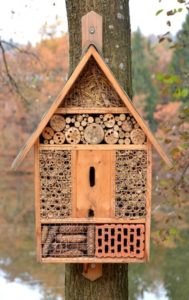
- Smart Design: Bees and other pollinators exert a great amount of energy flying from flower to flower. In order to reduce the energy they expend, plant pollinator flowers close together.
- Pollinator Puddles: Provide water resources for pollinators by strategically adding puddles of water to the ground. You can also create salt licks by adding a small amount of sea salt to your birdbath or pollinator puddle.
- Offer a Variety: Butterflies enjoy rotting fruits, which add needed nutrients to their diets. Instead of throwing old fruit into the trash, place it in your pollinator garden to give these gorgeous pollinators an energy boost.
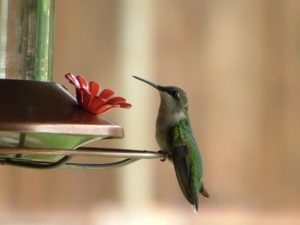
- Hummingbird Feeder: Place hummingbird feeders filled with nectar (four parts water, one part table sugar) in your garden. Hummingbirds are attracted to red, so look for a red feeder or add something red to yours.
- Leave the Limbs: When pruning dead limbs from trees, leave them in the garden for bees to nest in (but make sure they aren’t in the way of children or other people who may wander into the garden).
- Avoid Pesticides and Hybrid Flowers: Pesticides are toxic to most pollinators, especially bees. If you must use a pesticide, spray it at night when pollinators are not present. Hybrid flowers—while attractive—offer no pollen, nectar, or fragrance to pollinators.
Compost
Permaculture also takes into account the needs of the earth. Soil and plant health are imperative variables when practicing permaculture.
Composting is incredibly important for the environment. Compost is a natural fertilizer, and when used in combination with an environmentally friendly fertilizer, it will yield healthier plants and crops. Composting also reduces the amount of garbage in your trash can, aerates the soil, and controls weeds.
Remember that while some things might logically seem compostable, not everything can or should be composted. Below is a list of things you cannot compost:
- Meat
- Newspaper
- Ashes
- Animal feces
- Sawdust
Plant more Green
Mom always told us to eat more greens, but planting more greens is just as important. Green plants remove carbon dioxide from the air and produce the oxygen we breathe. Further than this, however, they serve as a means of cooling our cities, stabilizing our soil, and providing food and protection to humans and animals alike.
Without trees, we would have little to no shade during hot, sunny days, and their transpiration is what cools the air around us. Additionally, the roots of green plants hold soil in place, securing our buildings.
When planting flowers, shrubs, and trees, remember to add diversity to your garden. Diseases and pests prey on similar plants, so adding diversity will guarantee your entire garden is not devastated by these sorts of disasters.
From Garden to Table
As previously mentioned, when practicing permaculture, gardeners make smart use of their resources. What better way to do this than to grow food for your own consumption? And nothing beats a sun-ripened tomato from your own garden!
Planting fruits and vegetables is a healthy and fun way to save money while supporting the environment. Fruits and vegetables from the supermarket are often transported from other states, which plants a deep carbon footprint on the earth. Additionally, they are often treated with pesticides that can be harmful to humans.
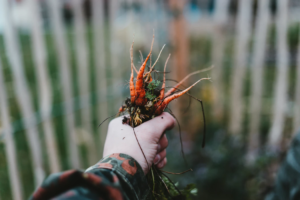
While growing your own food at home is safer, more affordable, and more environmentally friendly, home gardeners are often discouraged when they find that their fruits and vegetables aren’t growing as well as they’d hoped. Rather than throw in the towel and return to the supermarket, try out these tips:
- Perennials and Annuals: Plant perennials as well as well as annuals to increase your yield. Perennials don’t need to be replanted every year, as annuals do, and will offer a source of food when your annuals are not in bloom.
- Sowing Seeds: Plant smaller seeds in shallow holes and larger seeds in deeper holes, as some smaller seeds require light to germinate.
- Watch Water Intake: Use more water as seeds are germinating and less water as your plants begin to grow. This will encourage root structure development and reduce rot.
- Use Fertilizer: To grow healthy, strong plants, fertilizer is essential. Combining a natural fertilizer, such as compost, with an environmentally friendly fertilizer, such as xVital, will ensure your fruits and veggies grow faster and healthier.
xVital is a liquid fertilizer that is free of the environmentally harmful salts that conventional fertilizers use. To use xVital on your vegetables, spray at the beginning of vegetation, during pre-flowering, and two weeks before the vegetable is harvested. For fruits, such as strawberries, apply to established roots during pre-flowering and flowering stages. For more information about how to use xVital, visit our home page.
It’s up to everyone to contribute to the environment’s health. You can do your part by planting your own garden using the principles of permaculture.
For further reading, check out our article on hydroponics systems. If dirt, bugs, and sweat give you pause, then hydroponics could be for you!
Sources:











